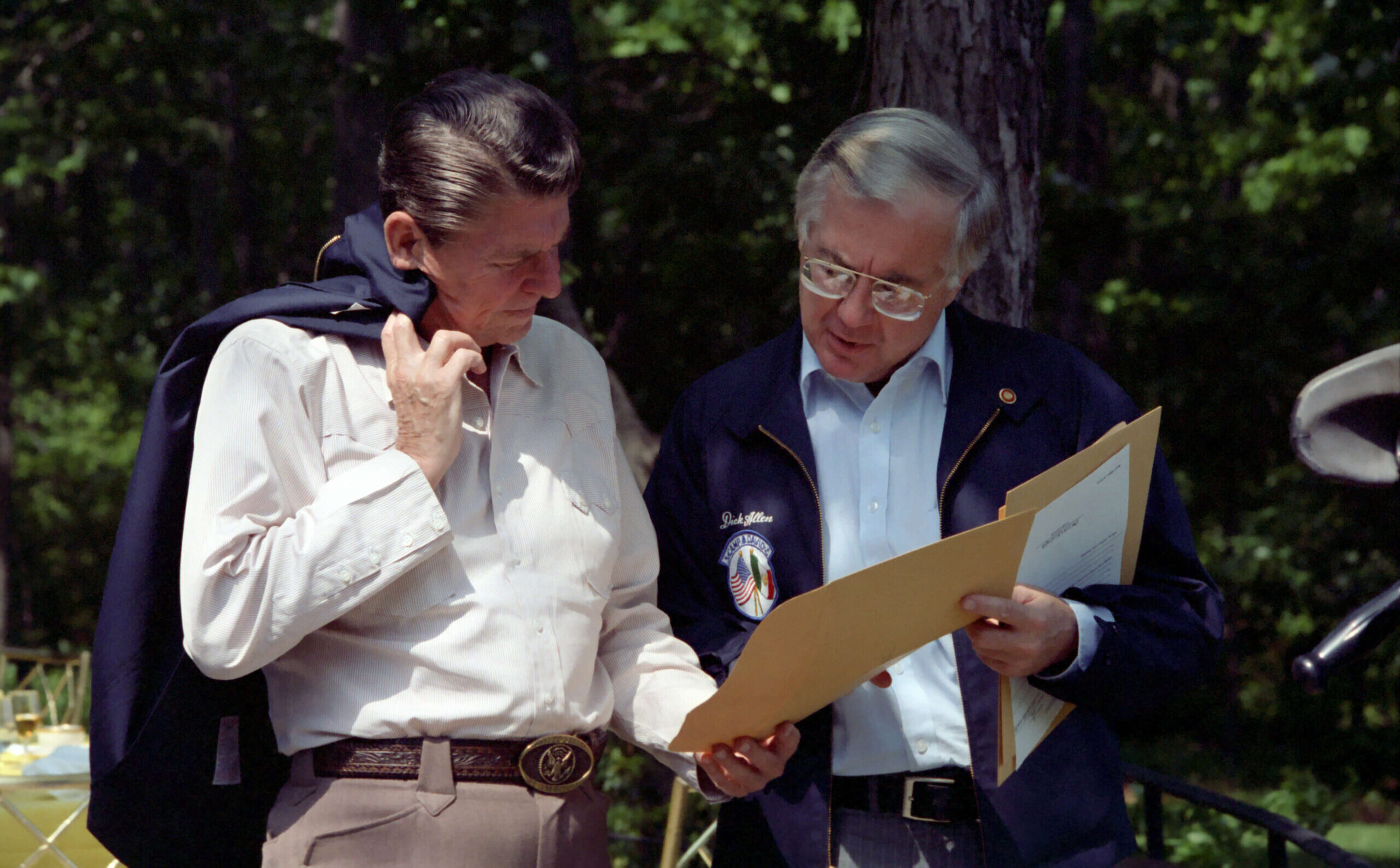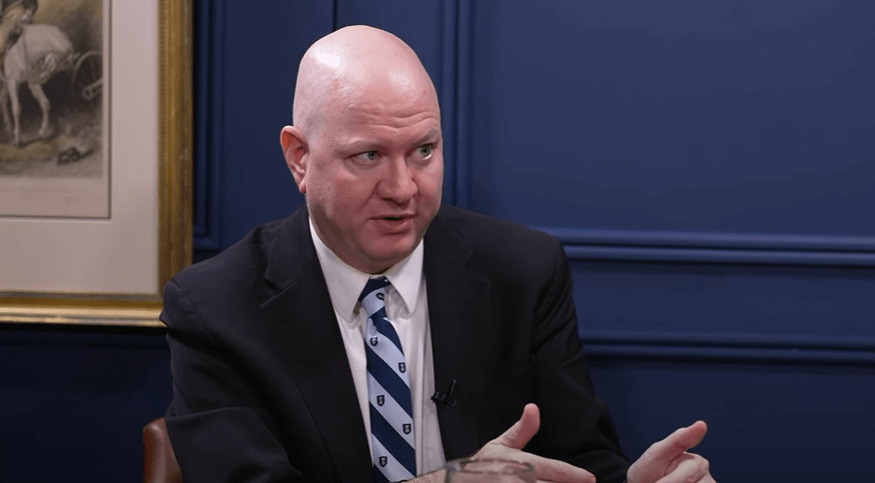A Time to Build:
From Family and Community to Congress and the Campus,
How Recommitting to Our Institutions Can Revive the American Dream
By Yuval Levin
(Basic Books, 2020)
Institutions in a free society can be understood as the natural products of liberty. When people live freely over time, they come to recognize recurring themes in social life and to appreciate human strengths and frailties. They use their liberty to generate a constellation of organizations, norms, and traditions that are responsive to generations of experience. These institutions enable us to get things done, they give us a sense of belonging, and they offer rules of the road for future interactions.
This understanding of institutions helps us see, first, that we shouldn’t merely study liberalism in theory. Instead, we must recognize that communities living in liberty over time gradually cultivate unanticipated practices that help them navigate the world. The effects of freedom can’t be foreseen by contemplating unencumbered individuals in suspended animation. Institutions are evolved products of mostly unplanned provenance.
Second, liberty need not degenerate into atomization and anarchy. Instead, liberty is used to spin a web of institutions that enable us to live together in peace and contentment. Liberty in action over time proves, perhaps counterintuitively, to be a social adhesive.
Seeing institutions in this light suggests that a liberal state amounts to a collection of societies rather than a single social contract. Yes, we relinquish a degree of autonomy to a central government that promises to protect us and secure sacrosanct rights. But we also enter agreements with a family, faith traditions, neighborhood groups, polite society, clubs, and professions. We consent to do some things and not to do others in exchange for the benefits we receive from the resulting social order.
This is a tidy, rational view of the roots and development of our common life: social creatures building communities through logical calculations about maximizing self-interest. But that makes institutions seem like nothing more than the sum of the motivations of the individuals that compose them. In America, we should give our associations and traditions more credit than that. What if we understand each institution as having a will of its own? What exactly do these institutions want from us?
An outstanding new book by Yuval Levin, A Time to Build, offers an answer: institutions want us to be better people. Each institution aims to provide imperfect individuals with the knowledge, skills, and dispositions necessary for helping that institution do its job. When we are successfully formed by healthy institutions—actually, a complementary collection of healthy institutions—they are more effective and more trusted, and we become better citizens of the overarching liberal state.
Hour of Discontent
A Time to Build is essential because it offers an explanation for our contemporary political dysfunction and sense of alienation and distrust. Levin believes many institutions have lost their will or ability to shape individuals, which produces discontented citizens, unreliable professions, and a frayed social fabric. Though I have a somewhat more optimistic opinion of the state of our institutions and perhaps a more censorious take on how government has influenced them, I find Levin’s basic insight to be compelling.
The heart of Levin’s argument is that institutions are devolving from “molds” into “platforms.” Instead of helping us improve, they serve as stages on which we can perform. Levin worries that individuals increasingly see “institutions not as molds that ought to shape their behavior and character but as platforms that allow them greater individual exposure and enable them to hone their personal brands.”
Levin understands institutions as “durable forms of our common life.” That includes, somewhat capaciously, formal organizations like legislatures, community groups, and hospitals, as well as informal rules, customs, and norms. All these institutions are a stable way of bringing people together for a purpose: they structure our priorities, expectations, and interactions with one another in pursuit of some goal.
This enables institutions to do their formative work, teaching everything from responsibility and humility to accommodation and honesty. That’s essential in Levin’s mind—consistent with ages of conservative thought—because of our defective factory settings. His book “begins from the premise that human beings are born as crooked creatures prone to waywardness and sin, that we therefore always require moral and social formation, and that such formation is what our institutions are for.” Levin implicitly underscores the distinction between liberty in itself and liberty in action over time: the former unbinds innately flawed individuals; the latter produces tools for coping with those flaws.
The problem is that many institutions are no longer engaging in formation as they once did. There are numerous causes. Widespread availability of information undermined institutions’ claims to special knowledge. Many institutions failed in recent years—consider the debilitating banking crisis, the calamitous response to Hurricane Katrina, perpetual wars, the botched rollout of Obamacare, and the Catholic Church’s sex scandals. What is more, Americans’ affinity for individualism always puts behavior-constraining institutions on the defensive. This is especially so in an era of rapid cultural change premised on a roomy understanding of individual rights.
The result is a vicious cycle. Because they no longer develop able, disciplined members, institutions become less deserving of our faith and admiration. People less often see themselves as “insiders” committed to working through their institutions. Instead, they present themselves as aggrieved “outsiders” justified in condemning institutions. Beset by critics, institutions then possess reduced capacity and intestinal fortitude to play the demanding role of molding and become hollowed-out vessels. With little reason left to go inside them dutifully and humbly, we stand atop them preening and lecturing.
Building a Brand
A Time to Build describes how this phenomenon affects multiple domains, such as journalism, Congress, and social media. Reporters used to be shaped by their profession and their employers to follow the standards of the craft. Customs related to understatement, fact-checking, and the elevation of the publication over the individual created trustworthy journalists and a trustworthy industry. Similarly, Congress used to instill in its members a sense of duty to the institution, the importance of compromise, and the obligation to contribute to the body’s tasks. For generations, newly elected members would be formed by the institution to serve the institution’s—and the nation’s—purposes.
But Levin describes how journalists today can give the impression that they aspire to build personal brands:
Too often now, prominent political reporters in particular can be found engaged in a never-ending, loose, unstructured form of conversational commentary on television, on Twitter, and elsewhere—a conversation carried on in public view but outside the procedural and ethical boundaries of their workplaces, which makes it increasingly difficult for journalism to lay claim to institutional integrity and nearly impossible for journalists to avoid petty partisanship.
Moreover, some elite journalistic institutions are engaging in the culture war, both to capture a larger audience and because they are influenced by younger journalists who believe institutions should “openly affirm and display their cultural attitudes and political instincts.”
Similarly, many members of Congress now eschew the duties of the position. Acting like outside commentators, they fulminate and jockey to get on cable news. The replacement of formative compromise with “performative outrage” decreases Congress’s capacity to do its work and the public’s faith in the institution. In a perverse sense, the legislative body’s deteriorating standing and reduced faculties actually facilitate its transition into a platform. As Levin notes in perhaps the book’s truest but bleakest sentence, “Congress is weak because its members want it to be weak.”
The other branches of the federal government have also been warped. Levin sees judicial activism as an example of the mold-to-platform transition. On cultural issues, “judges have found it difficult to resist grandstanding.” Levin’s observation that “some judges have come to think of the bench as a stage and of their work as part of a moralistic melodrama” brings to mind an infamous line from the opinion of Justices Kennedy, O’Connor, and Souter in Planned Parenthood v. Casey: “At the heart of liberty is the right to define one’s own concept of existence, of meaning, of the universe, and of the mystery of human life.” Though the book is blessedly quiet on our forty-fifth president, Levin astutely notes how Donald Trump’s preoccupation with the size of his crowds, unrelenting self-promotion, and peculiar habit of publicly criticizing the administration he leads are manifestations of our institutional crisis. Understanding “the presidency as a stage occupied by an outsider speaking at and about our system of government rather than for it, a kind of commentator in chief rather than a political actor,” is in Levin’s judgment an “ominous phenomenon.”
Levin’s critique of social media platforms is his most severe and edifying. Instead of creating bonds of mutual dependence, these platforms facilitate ephemeral connections and showboating. They enable venting without teaching openness, patience, and accommodation. Through algorithms that hand users what they unconsciously prefer, and by allowing users to consciously curate their own content, social media platforms shield us from unscripted encounters that expose us to other points of view. They are, he writes, “anti-institutions.” Through their use, we are driving ourselves mad.
Levin offers a host of possible remedies. The most provocative is to put “transparency” back in its proper place. By prioritizing organizational openness (think of government “sunshine” laws, Freedom of Information Act requests, live streaming meetings), we’ve unmasked bad actors and held institutions accountable. But transparency can also take away the privacy that helps get things done and helps shape us into better citizens: quiet deliberation, slow relationship development, and difficult compromise are the stuff of both organizational efficacy and character building. Full exposure can also contribute to the “platform” problem. Rather than persuading each other, participants in “transparent” institutions often speak to an outside audience of committed supporters.
Though there is reason for concern, America has enjoyed periods of renewed institutional formation before. For instance, the period from 1900 to 1920 saw the founding of the Boy Scouts, Girl Scouts, American Legion, Rotary Club, Kiwanis Club, and League of Women Voters. Levin argues that this doesn’t require a massive social movement, policy agenda, or religious revival. Individual action can go a long way. He recommends that more of us simply ask, “How shall I act, given my position?”
Local Still Matters
It says a great deal about my sympathy for Levin’s argument that my strongest objection relates to a footnote about an obscure definitional issue in F. A. Hayek’s The Counter-Revolution of Science. If there were a sequel, however, I’d encourage Levin to emphasize two concepts: “proximity” and “purpose.”
First, I suspect that the institutions most vulnerable to becoming platforms are far away from our day-to-day lives. Associations built on interpersonal, face-to-face connections and tethered to discrete geographies are more likely to retain their formative characteristics. In the excellent chapter “Close to Home,” Levin stresses the importance of local institutions. But he also notes that this is where difficulties are greatest. Changes in how families are structured and understood and decreasing church attendance and trust in religious institutions are diminishing the capacities of these essential institutions.
My experience, however, is that we are still shaped by our home parishes, local governing boards, Little League associations, PTAs, and charities. In fact, I’ve found state and local public service refreshing because there seems to be so much mission-oriented, rather than brand-building, work going on. Perhaps this is because character development requires propinquity or because it’s difficult to turn a meeting of fifteen people in the library’s common room into a self-promotional platform.
Regardless of the reason, it seems that a local newspaper will always be more adept at forming people than a national media conglomerate, a town council more adept than Congress, a book club more adept than social media. Indeed, while overall trust in institutions is down, it appears Americans have abiding (or at least resilient) faith in local governments and close-to-home institutions like small businesses and the police.
Second, as Levin and earlier scholars like Robert Nisbet have observed, people don’t take part in institutions just to join something. People gather to get things accomplished: formation appears to be a by-product of purposive activities. I suspect that when an institution loses its powers and responsibilities, it becomes susceptible to “platform-itis.” Institutional purpose is a centripetal force pulling people into association and pulling them closer together.
So I wholeheartedly agree with Levin’s recommendation that we direct civic work through institutions, especially local bodies, not around them, and that we “look for opportunities to launch new locally focused civic enterprises directed to meeting practical needs that are going unmet.” I also agree with Levin that the growth of the welfare state has taken away the traditional functions of many civic groups
But I’m struck by the broad range of ways law and policy have stolen the functions from and undermined institutions. It’s not just anti-poverty programs. The bullying of the Little Sisters of the Poor into providing health insurance that covers contraception; powerful lobbies undercutting single-sex voluntary associations; activist courts overturning democratically generated statutes; state governments overturning local ordinances; educational authority’s gravitation away from school boards and nonprofits toward state capitals and Washington; the privileging of data-based decision-making by technocratic “experts” above the accumulated wisdom embedded in small communities of practice—all these trends add up to a systemic problem. We are dispossessing institutions, especially the most formative institutions, of their functions.
We know that liberty in action over time reveals the strengths and weaknesses of free people and free societies; it then leads to the creation of formative institutions to mitigate such weaknesses and amplify such strengths. But more recent experience has taught us that unexpected cultural and economic shocks and purposeful legislative and legal interventions can destabilize this order. New technologies can connect us without creating meaningful bonds; new political sensibilities can delegitimize local differences and traditional beliefs; new political and judicial preferences can centralize power in the hands of faraway administrators. That is why we have individuals who are more frustrated and alienated, institutions that are less effective and trustworthy, and a society that is less stable and cohesive.
As I see it, conservatives should recognize this not as a time to promote nationalism (which would empower faraway, platform-itis-prone entities), but as a time to create policy and legal environments that empower citizens to build close-to-home, formative institutions with real power and real purpose. That requires conservatives’ recommitment to federalism, localism, small-scale democracy, pluralism, philanthropy, civic virtue, and civil society. This would be my strategy for cultivating the “age of social replenishment” that A Time to Build argues we need. Levin demonstrates convincingly that institutions can help shape us into healthier, happier citizens. Now it’s time to help institutions help us.
Andy Smarick is the director of civil society, education, and work at the R Street Institute.
Founded in 1957 by the great Russell Kirk, Modern Age is the forum for stimulating debate and discussion of the most important ideas of concern to conservatives of all stripes. It plays a vital role in these contentious, confusing times by applying timeless principles to the specific conditions and crises of our age—to what Kirk, in the inaugural issue, called “the great moral and social and political and economic and literary questions of the hour.” Subscribe to Modern Age »














